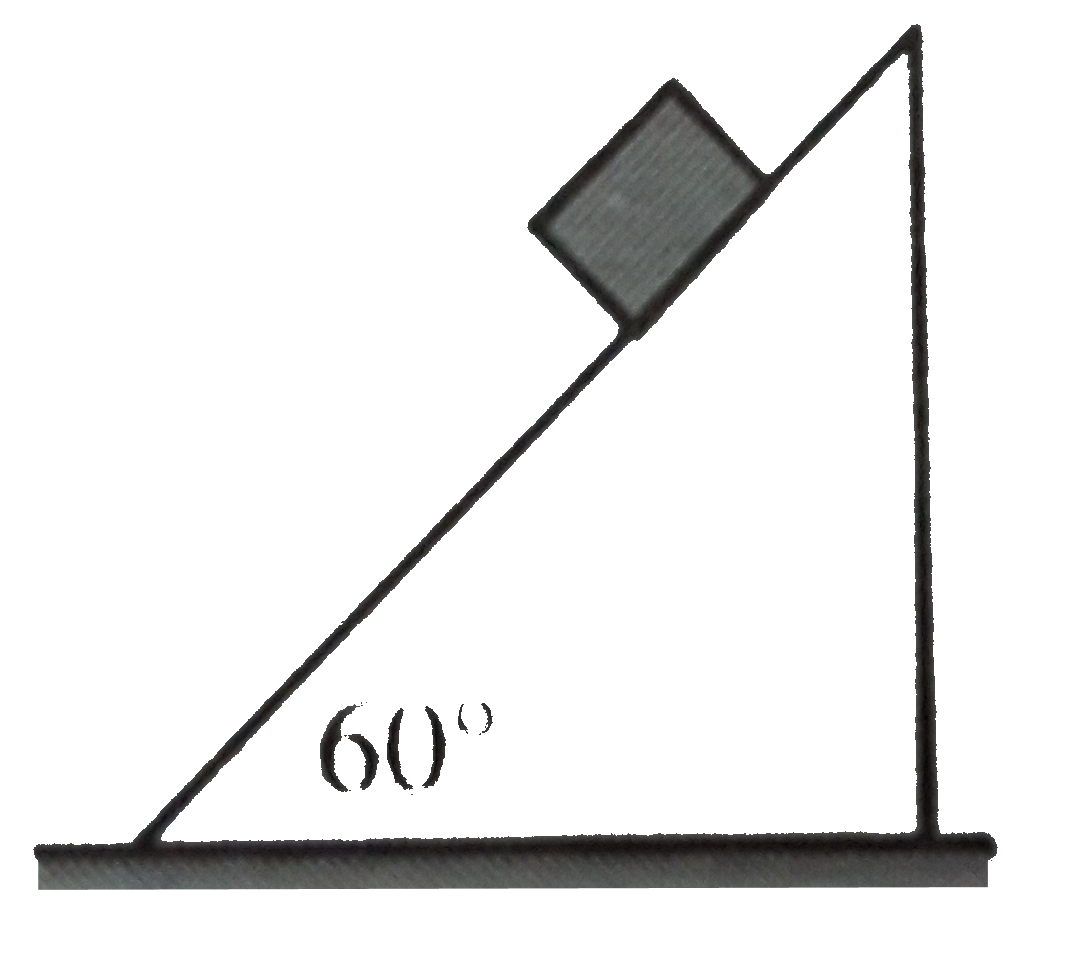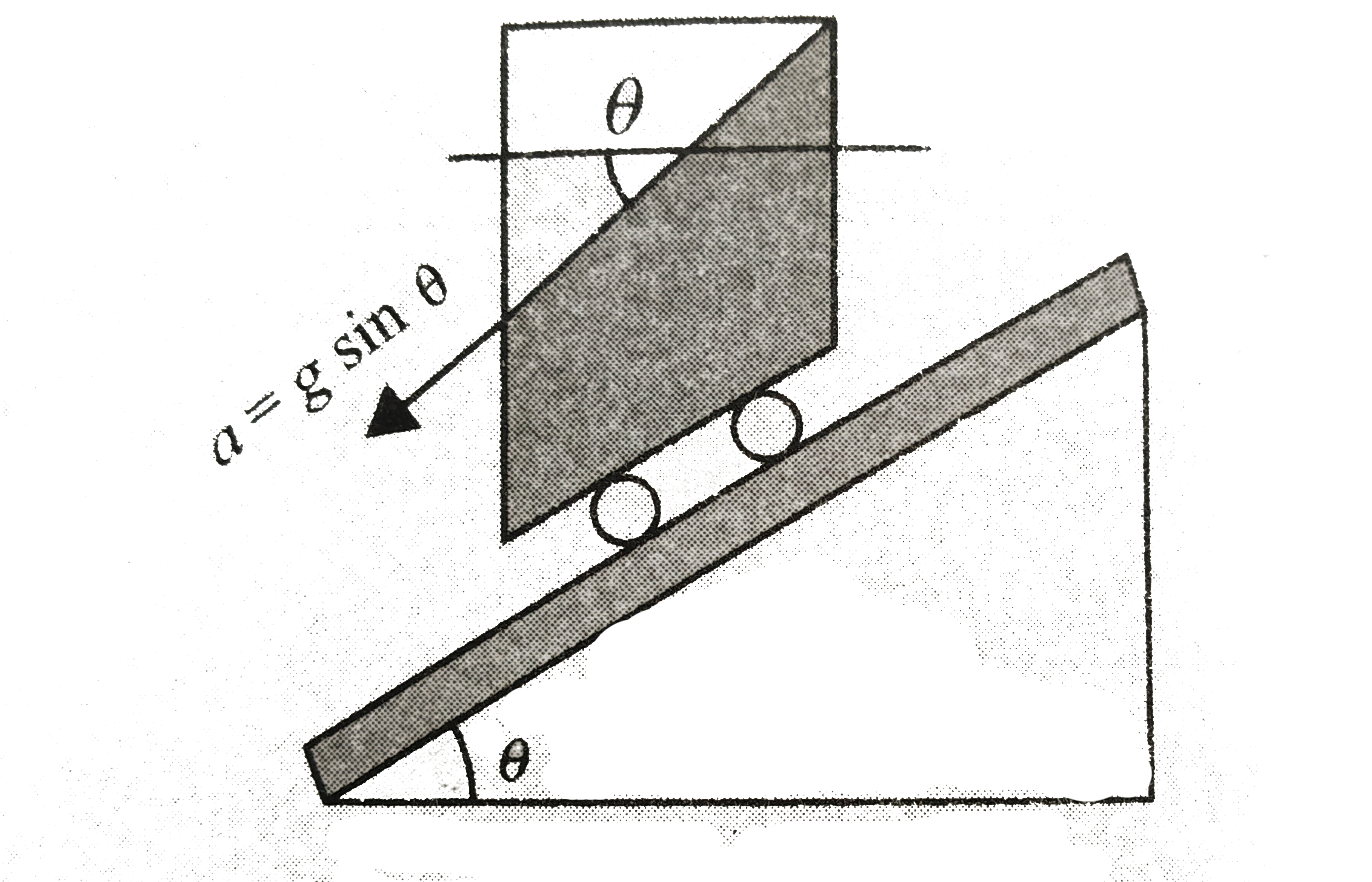Assertion: A body slides down an inclined plane if the angle of friction is more than the angle of the inclined plane with the horizontal.
Reason : When the angle of inclination is equal to the angle of friction, the component of weight parallel to the plane is just sufficient to overcome the frictional force.
If both assertion & Reason are True & the Reason is a corrrect explanation of the Asserion.
If both Assertion & Reason are True but Reason is not correct explanation of the Assertion.
If Assertion is Trie but the Reason is False.
If both Assertion & Reason are false
The correct Answer is:C
To analyze the assertion and reason provided in the question, we will break down the concepts of friction, inclined planes, and the conditions for sliding.
1. Understanding the Assertion:
- The assertion states that a body slides down an inclined plane if the angle of friction (α) is greater than the angle of the inclined plane (θ).
- To analyze this, we need to understand the relationship between the angle of friction and the angle of inclination.
2. Condition for Sliding:
- A body will slide down the inclined plane if the component of gravitational force acting parallel to the incline exceeds the maximum static frictional force.
- The maximum static frictional force can be expressed as Ffriction=μsN, where μs is the coefficient of static friction and N is the normal force.
3. Forces Acting on the Body:
- The weight of the body can be resolved into two components:
- Perpendicular to the incline: Wcosθ
- Parallel to the incline: Wsinθ
- The normal force N is equal to Wcosθ.
4. Frictional Force:
- The maximum frictional force that can act on the body is given by Ffriction=μsWcosθ.
- The angle of friction (α) is related to the coefficient of static friction by μs=tanα.
5. Comparing Forces:
- For the body to slide, the condition is:
Wsinθ>Ffriction
which translates to:
Wsinθ>μsWcosθ
- Simplifying gives:
tanθ>μs
- Since μs=tanα, we can rewrite this as:
tanθ>tanα
- This implies that sliding occurs when θ>α.
6. Conclusion on Assertion:
- The assertion is incorrect because a body will slide down the inclined plane when the angle of inclination (θ) is greater than the angle of friction (α), not the other way around.
7. Understanding the Reason:
- The reason states that when the angle of inclination is equal to the angle of friction, the component of weight parallel to the plane is just sufficient to overcome the frictional force.
- This is correct because at this point, the forces are balanced, and the body is on the verge of sliding.
8. Final Evaluation:
- The assertion is false, and the reason is true. Therefore, the correct conclusion is that the assertion does not support the reason.
- The assertion states that a body slides down an inclined plane if the angle of friction (α) is greater than the angle of the inclined plane (θ).
- To analyze this, we need to understand the relationship between the angle of friction and the angle of inclination.
- A body will slide down the inclined plane if the component of gravitational force acting parallel to the incline exceeds the maximum static frictional force.
- The maximum static frictional force can be expressed as Ffriction=μsN, where μs is the coefficient of static friction and N is the normal force.
- The weight of the body can be resolved into two components:
- Perpendicular to the incline: Wcosθ
- Parallel to the incline: Wsinθ
- The normal force N is equal to Wcosθ.
- The maximum frictional force that can act on the body is given by Ffriction=μsWcosθ.
- The angle of friction (α) is related to the coefficient of static friction by μs=tanα.
- For the body to slide, the condition is:
Wsinθ>Ffriction
which translates to:
Wsinθ>μsWcosθ
- Simplifying gives:
tanθ>μs
- Since μs=tanα, we can rewrite this as:
tanθ>tanα
- This implies that sliding occurs when θ>α.
- The assertion is incorrect because a body will slide down the inclined plane when the angle of inclination (θ) is greater than the angle of friction (α), not the other way around.
- The reason states that when the angle of inclination is equal to the angle of friction, the component of weight parallel to the plane is just sufficient to overcome the frictional force.
- This is correct because at this point, the forces are balanced, and the body is on the verge of sliding.
- The assertion is false, and the reason is true. Therefore, the correct conclusion is that the assertion does not support the reason.
Topper's Solved these Questions
- NEWTONS LAWS OF MOTIONBook:ALLENChapter:NEWTONS LAWS OF MOTIONExercise:EXERCISE-II
Explore 112 Videos
- NEWTON'S LAWS OF MOTION & FRICTIONBook:ALLENChapter:NEWTON'S LAWS OF MOTION & FRICTIONExercise:EXERCISE (JA)
Explore 4 Videos
- RACEBook:ALLENChapter:RACEExercise:Basic Maths (Wave Motion & Dopplers Effect) (Stationary waves & doppler effect, beats)
Explore 24 Videos
Similar Questions
When a body slides down an inclined plane with coefficient of friction as μk, then its acceleration is given by .
View SolutionA block slides down on inclined plane (angle of inclination 60∘ ) with an accelration g/2 Find the coefficient friction

View SolutionA box is placed on an inclined plane and has to be pushed down.The angle of inclination is
View SolutionA block is at rest on an inclined plane making an angle α with the horizontal. As the angle of the incline is increased the block start slipping when the angle of inclination becomes θ then coefficient of friction is equal to
View SolutionWhen a body rolls without sliding up an inclined plane the frictional force is :
View SolutionA trolley containing a liquid slides down a smooth inclined plane of angle α with the horizontal. Find the angle of inclination θ of the free surface with the horizontal.

View SolutionThe angle which the rough inclined plane makes with the horizontal when the body placed on it just starts sliding down is called
View SolutionA block slides down an inclined plane that makes an angle θ with the horizontal. If the coefficient of kinetic friction is μ, find the acceleration of the block.
View SolutionA block lying on an inclined plane has a weigh of 50N .It just beings to side down when inclination of plane with the horizontal is 30∘ find the coefficient of static plane friction .
View SolutionA body is sliding down an inclined plane having coefficient of friction 0.5. If the normal reaction is twice that of the resultant downward force along the inclination the angle between the inclined plane and the horizontal is
View Solution

